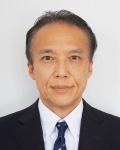- HOME
- Research
- Researcher's Profile
- Shinji YAMASHITA
Researcher's Profile

- Professor
- Shinji YAMASHITA
- Information Devices
- Laser Photonics Sensing
- syama
 cntp.t.u-tokyo.ac.jp
cntp.t.u-tokyo.ac.jp
- Tel
- 03-5841-6659
- FAX
- 03-5841-6025
Biography
| February 1991 | Research Associate, RCAST, The University of Tokyo(UTokyo) |
|---|---|
| August 1994 | Lecturer, RCAST, UTokyo |
| April 1995 | Lecturer, School of Engineering, UTokyo |
| April 1996 | Visiting Research Fellow, ORC, Southampton Univ., UK (-1998.4) |
| April 1998 | Associate Professor, School of Engineering, UTokyo |
| April 1999 | Associate Professor, School of Frontier Sciences, UTokyo |
| April 2004 | Associate Professor, School of Engineering, UTokyo |
| July 2009 | Professor, School of Engineering, UTokyo |
| April 2013 | Professor, RCAST, UTokyo |
Research Interests
We, the Yamashita-Lab., are mainly focusing on photonic devices, such as fiber devices and lasers, for telecom, sensing, and medical applications, and also on their system applications.
- Fast and wide wavelength tunable fiber lasers and their OCT applications We are working on the fiber lasers using Rare-earth-doped fibers or semiconductors for telecom and sensing applications. We are currently emphasizes on fast and wide wavelength tunable fiber lasers having very wide tuning range (>100nm) and a very fast tuning speed (Repetition rate > 100kHz). We are also trying to apply the lasers to the optical coherence tomography systems (OCT).
- Nanocarbon photonic devices and their applications Nanocarbons, such as Carbon nanotubes (CNT) and graphene, have very interesting useful, not only mechanical and electrical, but also photonic properties. We are pursuing researches on nanocarbon photonics. We concentrate on the stable and high-energy short-pulse fiber lasers using the nanocarbons. Nanocarbons have very fast saturable absorption, which enables generation of short (~1ps) optical pulses through passive mode locking. We also demonstrated ultra-wideband supercontinuum (SC) generation using the laser as a seed source. We are trying to apply the SC source to the OCT system.
- Photonic devices for telecom and sensing applications We are also working on photonic devices for telecom and sensing applications, such as wavelength converter and parametric amplifier using fiber nonlinearity, fiber lasers, and fiber filters.
- Fast and wide wavelength tunable fiber lasers and their OCT applications We are working on the fiber lasers using Rare-earth-doped fibers or semiconductors for telecom and sensing applications. We are currently emphasizes on fast and wide wavelength tunable fiber lasers having very wide tuning range (>100nm) and a very fast tuning speed (Repetition rate > 100kHz). We are also trying to apply the lasers to the optical coherence tomography systems (OCT).
- Nanocarbon photonic devices and their applications Nanocarbons, such as Carbon nanotubes (CNT) and graphene, have very interesting useful, not only mechanical and electrical, but also photonic properties. We are pursuing researches on nanocarbon photonics. We concentrate on the stable and high-energy short-pulse fiber lasers using the nanocarbons. Nanocarbons have very fast saturable absorption, which enables generation of short (~1ps) optical pulses through passive mode locking. We also demonstrated ultra-wideband supercontinuum (SC) generation using the laser as a seed source. We are trying to apply the SC source to the OCT system.
- Photonic devices for telecom and sensing applications We are also working on photonic devices for telecom and sensing applications, such as wavelength converter and parametric amplifier using fiber nonlinearity, fiber lasers, and fiber filters.
Keywords
Optical fiber communications, Optical fiber sensors, Optical fiber lasers, Carbon nanotube, Graphene

